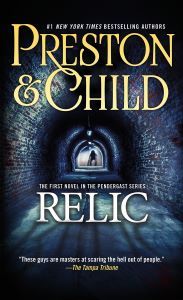
Why There Aren’t More Jointly Authored Novels
While joint authorship is frequent in academic writing, it’s less common within writing for general audiences. There are lots of exceptions, of course. Jointly authored novels appear to be more common in genre and YA fiction (and of course team authorship is standard in comics). Jenny Han and Siobhan Vivien turned their friendship into the YA trilogy Burn for Burn. Two recent examples of jointly authored YA novels that tackle racial inequality are All American Boys by Jason Reynolds and Brendan Kiely and I’m Not Dying with You Tonight by Kimberly Jones and Gilly Segal.
A recent sci-fi example, meanwhile, is Amal El-Mohtar and Max Gladstone’s
Over in the romance world, In Case You Forgot was authored by Frederick Smith and Chaz Lamar. And Tash Skilton is the mashup pen name of Sarvenaz Tash and Sarah Skilton, who were Twitter friends before becoming an authorial duo. They’ve said that writing this way has its own issues, but is “half the work, twice as fast.” (However, not all author teams report that this process saves time.)
Some well-known genre authors work with partners to keep their output prolific. Historical novelist Wilbur Smith, for instance, is the ideas man in his collaborations, while his lesser-known partners do the grunt work of bringing those ideas to life.
Similarly, the incredibly lucrative James Patterson brand involves an army. While Patterson outlines his novels, a team of coauthors does the rest of the writing. One collaboration where Patterson, unusually, took on the bulk of the work was in his novel coauthored with Bill Clinton. Computer analysis suggests that Patterson’s style was dominant for most of the book.
A more enduring high-profile collaboration is between Douglas Preston and Lincoln Child, who have authored some 30 thrillers together. The relationship started when Child edited Preston’s first book, a nonfiction work about the American Museum of Natural History. Child suggested that the two work on a museum-set thriller together, and Relic was born. Greer Hendricks and Sarah Pekkanen also became coauthors of thrillers after first enjoying an author-editor relationship. Unusually for coauthors, Pekkanen and Hendricks write each line collaboratively, using Google Docs and long phone calls.
Preston and Patterson are in storied company. Alexandre Dumas did the plotting for his classic novels, while coauthors did “the donkey work.” However, while Patterson’s coauthors share the credit (albeit in tiny font), Dumas’s collaborators were less inconsistently credited. His frequent writing partner Auguste Maquet, a novelist himself, shared royalties with Dumas. He wanted co-acknowledgment, though his lawsuit seeking this was unsuccessful. Thus the Dumas/Maquet relationship blurred the line between ghostwriting and genuine coauthorship, as contemporary coauthors generally share both the proceeds and the authorship credit.
Far from the rarefied celebrity circles of Dumas and Patterson is Wu Ming, an Italian collective that writes historical novels that can be downloaded for free in the original Italian. Wu Ming’s members, who are referred to by numbers (e.g. “Wu Ming 2”), decline TV opportunities and photo sessions, as their ethos is anti-individualistic. The members continually rewrite each other’s work, so there’s little room for ego-stroking.

The fiercely communal Wu Ming contrasts with the trope of the lone genius. Romantic reasons are often given for the rarity of group-authored literary novels. A common perception is that unlike other forms of writing, there is something innately solitary about literary fiction. But this image, like the term itself, can unfairly elevate and romanticize a specific kind of writing.
In comparison, the work of comics can be broken up into more technical components, like inking and coloring. And genre fiction is more likely to follow a set of narrative conventions that facilitate the melding of multiple minds. Sometimes both aspects make for fruitful collaborative authorship. Twisty thriller plots, for instance, can be aided by an author who’s better at plotting and another who’s stronger at character development.
However, it appears likely that the primary obstacle to group authorship of literary fiction is financial. This type of novel generally has fewer financial returns than genre fiction. Dividing sparse royalties and advances even further, while increasing the number of people who need to check edits and proofs, is a tricky proposition.
















